 SVETLIN YOSIFOV, FINALIST AND PUBLISHED IN OUR BLACK & WHITE 2019
SVETLIN YOSIFOV, FINALIST AND PUBLISHED IN OUR BLACK & WHITE 2019
Svetlin Yosifov travel photographer from Bulgaria.
Not a professional freelance photographer.I define myself as a travel-documentary-art photographer. Almost 20 years now photography has been part of my life. My passion is catching street portraits and trying to figure out my object’s character. Point of interest – traditions in primal and natural places like India, Ethiopia, Kenya, Indonesia, Vietnam, Laos, Cambodia, Cuba and more. I consider good photography to be much more that a snapshot or a memory, it is something that tells a story, strong enough to influence the world we live in and raise more awareness. Throughout the years my interviews and photographs have been published in many magazines and websites. [Official Website]
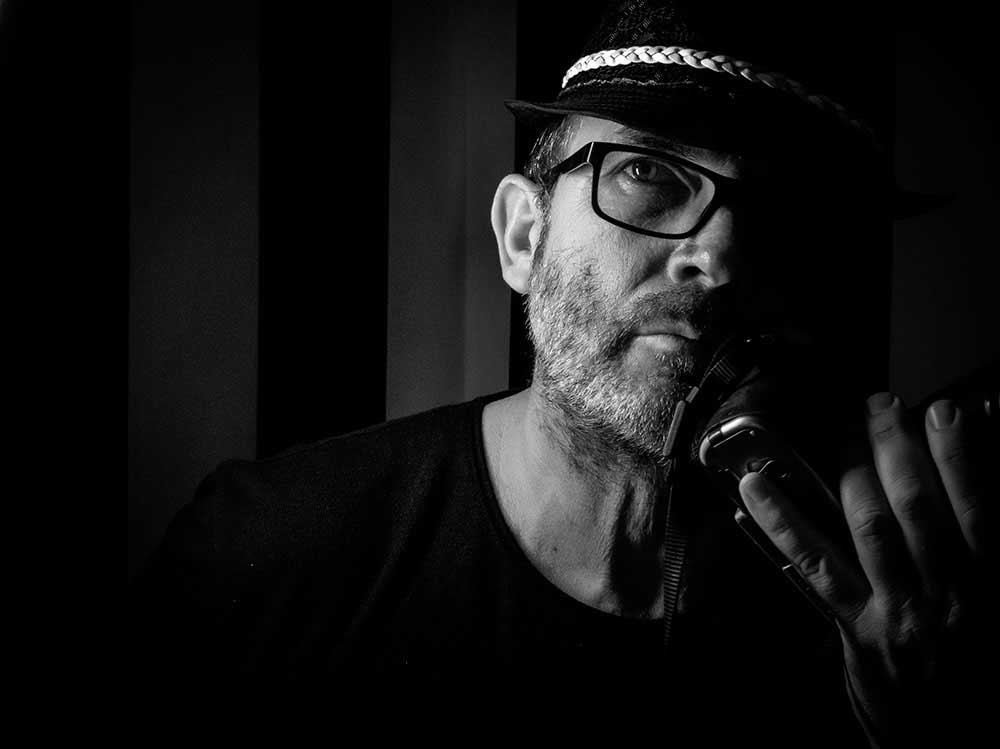
I’d like to begin by complementing you on such a unique and inspiring body of work. One of my favourites from this edition. What strikes me the most when I initially saw this collection was the application of white paint across various characters. Is the application of paint something which has to be earned as a tribesman or tribeswoman over a certain period of time and does it define the various personalities of individuals within the community?
First of all, I would like to thank you for the opportunity to show my work in the worldwide magazine Dodho, as well as to be part of your photographic community. Africa is a continent of diversity – culture, traditions, languages and different ways of seeing and knowing beauty. This comes as a shock to most of us, living in the modern world with different ideas and perception of reality.
The “Mursi” tribe is not one of the most popular in Africa but is one of the most aggressive and violent ones, when it comes to tribal conflicts. Throughout the years, this has definitively left a mark on their behavior and looks. The tribal make-up plays a crucial part in the everyday life and used, according to their needs, in different occasions – hunting, weddings, funerals and scaring of the enemies. Make-up is also a social mark, used to distinguish male from female and people from the tribe from other tribes and communities. Mursi people make the paint, my mixing clay and dried flowers, thus creating different shades. Often, if needed, they use animal excrements. The white color for them means hope, pureness and light!
You mentioned that you lived among them during this shoot. Could you elaborate on this experience and what type of activates or role did you play within the tribe? Were you ever invited on a hunt or join certain gatherings?
Whatever stories you might have heard about the “Mursi” tribe, they are always welcoming and ready for a nice conversation. They are happy to make a camp for you right next to their homes. Every night, during my seven day stay there they lit up a fire for me, I was asked to join them, sit with them and talk with them with the help of my guide as a translator. In the light of the fire a man starts singing, seconds after that many others join him. This reminded me of a slavery song with lots of pain and sorrow in it. Bonding with the tribe is very important for my shoots. That is why I start taking photos on the second day
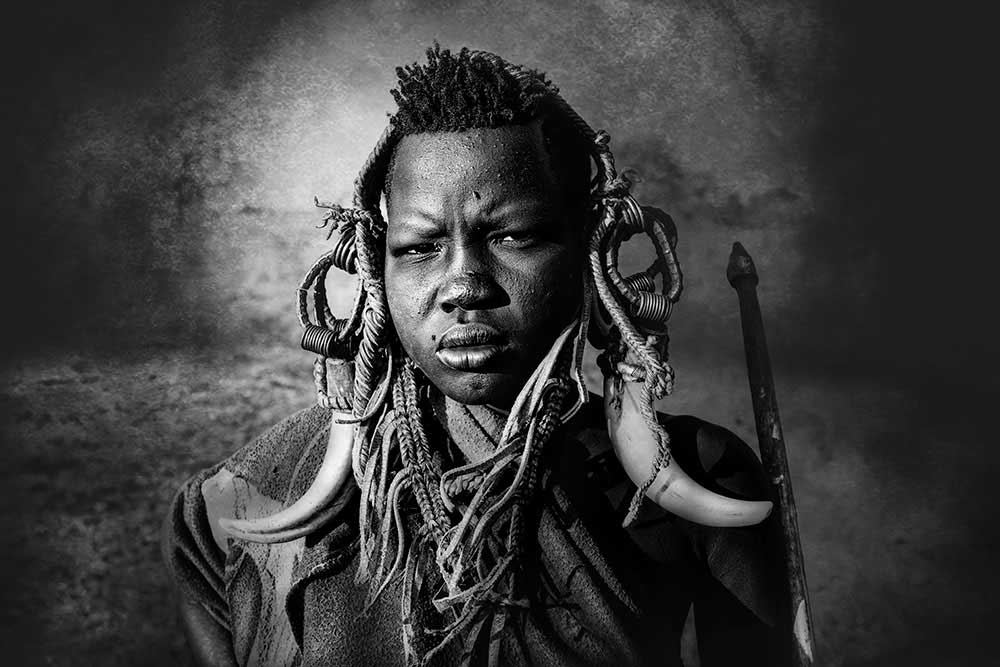
This body of work is part of a bigger collection of images taken around Ethiopia. How does this tribes’ traditions and customs differ from that of other tribes which you have visited?
In 2018 I had my first Ethiopian expedition. I visited almost every tribe in the Omo Valley national park and as a result, made about 70 photos published in the album “Ethiopian tribes expedition” 2018. There I show photos of tribes like Hammer, Arbore, Mursi, Dassanech and Karo. Each tribe has a unique way of life and traditions. But the tribe with the biggest mark on my eyes and soul was the Mursi tribe, not because they cut off their lips and ears, but because in the eyes of each and every single one of them ,I can read “I am proud to be Mursi!”.
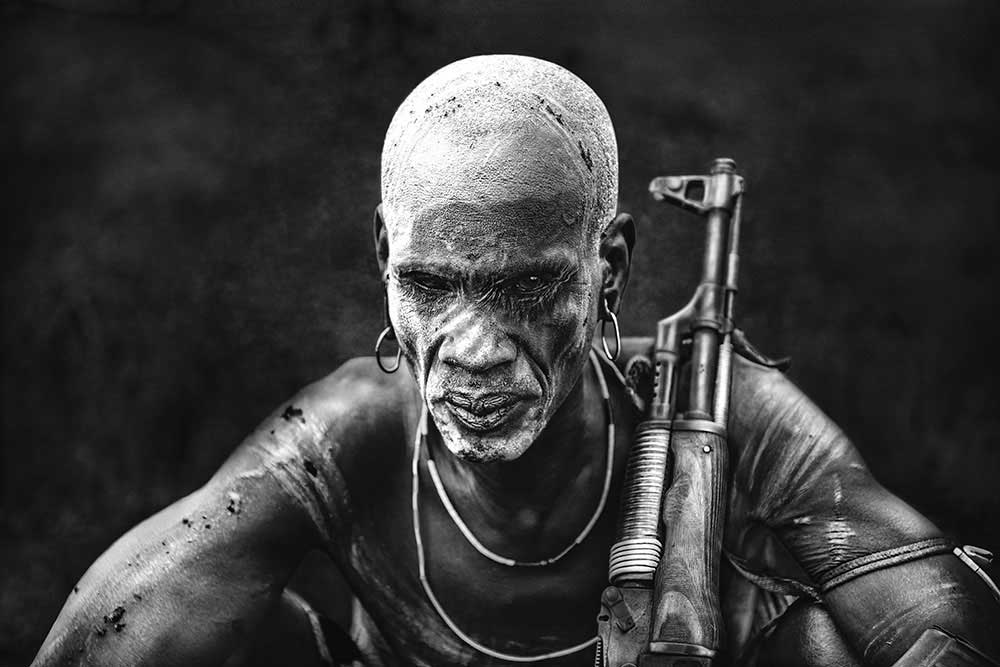
The scarification of one’s body seems to be a recurring factor throughout this project, was this something common in all the tribes that you visited and if so, were you ever invited to do the same or something similar?
Oh, of course I was! ..☺ I was also offered to be cut with a knife or thorn. My guide told me that “scars are a sign of beauty within the tribe”, but I told him that I am handsome enough!
The scarification aren’t just any scars, they’re an elaborate part of local culture and signify everything from beauty to adulthood or even, in some cases, are simply a mark of belonging.
This project focuses specifically on portraiture. Was this your intention from the start, to focus only on the individuals in the tribe? Because the images themselves seem to successfully dance around the idea that they might or might not be staged. The image of the bald old man with the gun for instance is a perfect example of this balance of emotions?
Photographers who have already visited the national park of Omo Valley in Ethiopia know that this is a hard place for shooting. This goes mainly for the Mursi tribe, as they live in a distinct area with no streets, houses or whatever structure of living. They are organized in small groups of 3 to 10 families and are always on the move for food and according to the seasons. They long for people with cameras, because this way they can get money to buy food. Thus, want many photos in order to earn more. Throughout the years they have learned to be models- some good, some bad. This was definitively a challenge for me, since I don’t like orchestrated photos. If you mean the “Warrior, Mursi tribe photo”- it is one of my favorites. No orchestration in this one. He was just sitting in front of the fire and I took the shot. During my last visit in 2019 I tried to find this man and thank him, but they said he either died or was in jail.
Amazing people, amazing personalities and a constant fight for life and survival this is the Mursi tribe. I wish every single photographer the luck to go there, visit Mursi and express their vision of the wild lands of Ethiopia.
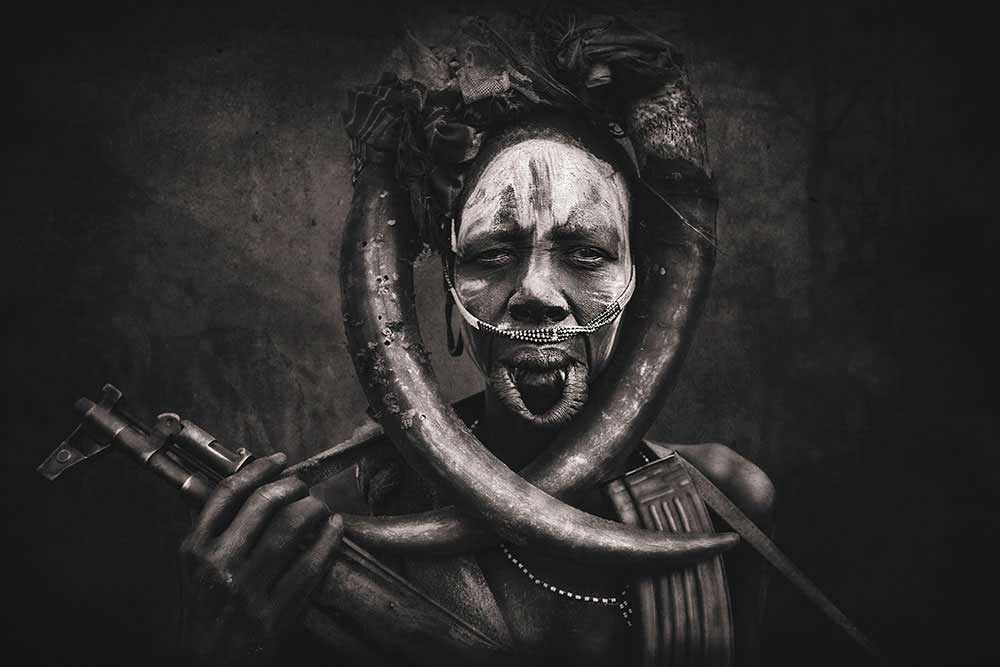
I was wondering if you could elaborate on this idea of the “illusion”. You stated that living among them gave you a sense of “extreme authenticity”, however could you expand on this idea of the illusion while living with this tribe?
It’s in every photographer’s style to have a little amount of “illusion”. This is our way to see the invisible in a shot and show it in our own style, which is always a hunch away from reality. Here, is an example: A photographer dresses a beautiful girl as a nun. Through his pictures he expresses purity and perfection, but the model is not all that in reality, is it? When I take a shot, I imagine the perfect moment before that. I focus my attention on the details, the eyes, the chest, sometimes the background, the things that the model is holding in their hands and then build the overall impression of the shot. All of this helps the observer to orient himself in this main idea. I like creating illusions. I am sure that everyone who liked a photo of mine, understood it and there is a great chance that it turned out as a mutual illusion and why not even a dream?
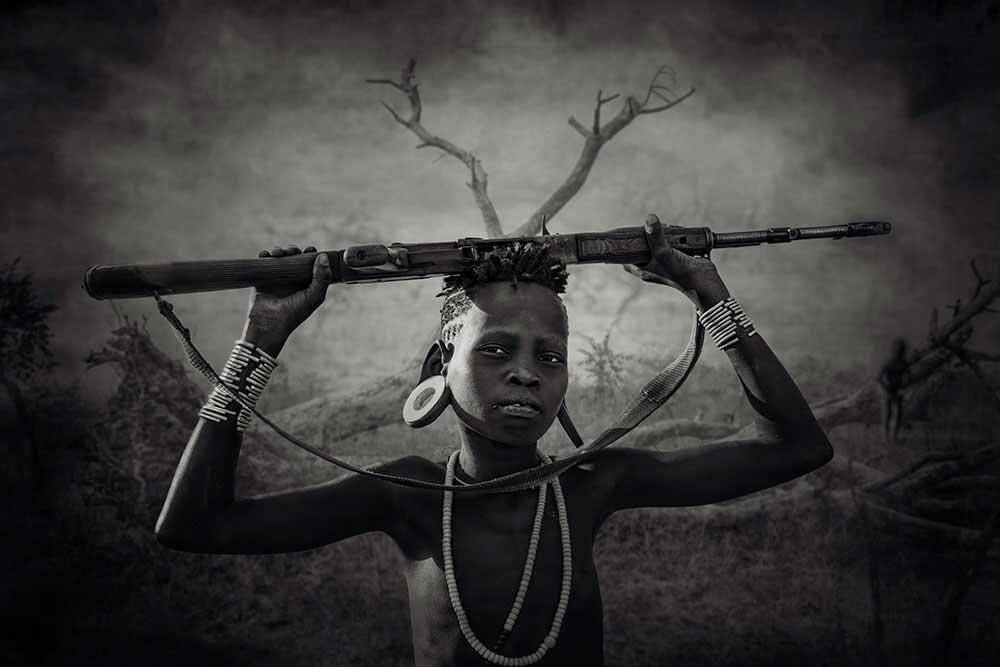
Francesco Scalici
A recent MA graduate from the University of Lincoln, Francesco has now focused on landscape photography as the basis of his photographic platform. An author for DODHO magazine, Francesco’s interest in documentary photography has turned to writing and has had various articles, interviews and book reviews published on platforms such as: ‘All About Photo.com’, ‘Float Magazine’ and ‘Life Framer Magazine’. Currently on a photographic internship, Francesco has most recently been involved in the making of a short film titled: ‘No One Else’, directed by Pedro Sanchez Román and produced my Martin Nuza.







